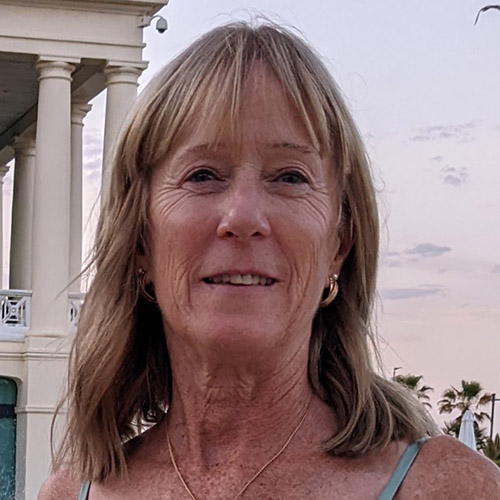Elizabeth McGinnis

Elizabeth trained and worked as a nurse in Leeds. She has practiced as a District Nurse, Midwife, Nurse Manager, Nurse Specialist and Nurse Consultant in Tissue Viabiity. Her current role is supporting the implementation of the NIHR HTA funded MIDFUT trial.
Elizabeth has presented and published widely on many aspects of Tissue Viability. She is a peer reviewer for several journals; an expert reviewer for the NIHR HTA programmes; a member of the NICE pressure ulcer clinical guideline development group and previously a Trustee of the Tissue Viability Society.
Elizabeth is actively involved in research in Tissue Viability and is a co-applicant on several NIHR research grants.
Presentation at The SoTV/EWMA 2024 Conference, London
PRESSURE 3: Building the links between evidence, perceptions and the reality of clinical practice in heel pressure ulcer prevention: The pathway to a successful investigation of effectiveness
Learning objectives
After attending this session, persons will be able to:
- Understand the processes and exploratory work required to develop a successful clinical trial
- Understand how platform trials can improve trial recruitment
Abstract
Numerous devices exist for the prevention of heel pressure ulcers(PU). Evidence on relative effectiveness and clinical utility of each device is minimal.
Aims and method: To plan an RCT to inform the evidence base, we needed to:
- Establish the evidence base with systematic review(1)
- Understand current practice(2)
- Identify what informs stakeholder decision making and existence of clinical equipoise(2)
- Identify high risk populations
- Identify an efficient process to deliver a trial with low incidence rates
Results: No evidence for Constant Low Pressure(CLP) devices, poor quality evidence for off-loading devices (15 RCTs identified. 2 trials (n= 422), outcome of Cat 2 PU medium quality RR 0.08 95% CI 0.01-0.67).
Current practice was variable and informed by stakeholder and peer preference, which also influences clinical equipoise.
Differences were observed in what stakeholders believed was happening in clinical practice, and what actually happens.
Fractured neck of femur patients were identified as high risk group with variable practices. An established research platform (WHiTE) was used to optimise recruitment to a 3-arm RCT of heel PU prevention devices.
Conclusions: Establishing evidence and current practice and working with an established research platform successful trial funding was achieved for a 3-arm RCT. Recruitment is underway.
References:
- Greenwood, C. et al. (2022)https://doi.org/10.1016/j.jtv.2022.09.009
- Greenwood, C. et al. (2023)https://doi.org/10.1016/j.ijnurstu.2023.104479
Presentation at The Society of Tissue Viability 2023 Conference
Preventing chronic leg ulcers following excision of cancer on the lower limb: HEALS and HEALS 2
Objectives
After attending this session, persons will have a greater understanding of:
- Gain insight to a type of wound that could lead to chronic leg ulceration
- Gain insight to the characteristics, care pathways, healing trajectories and complications of people undergoing surgery for lower limb keratinocyte cancers
- Gain insight into the process of data collection for planning an RCT
- Gain insight into the development of trial to investigate an area of clinical uncertainty
Abstract
Wounds on the lower legs, if not managed correctly can become chronic leg ulcers. Wounds that result from the surgical excision of keratinocyte cancers are often left to heal by secondary intention. There is limited information on the characteristics of this surgical wound patient population, how many of these become chronic leg ulcers. Compression therapy is considered beneficial in preventing wound chronicity and it is used post-operatively by many Dermatology surgeons in this patient population, however there is a lack of supportive evidence.
A prospective cohort study was carried out to describe the patient characteristics, wound duration, care pathways and complications. The study recruited 58 patients as planned. The results identified a predominantly elderly population (mean age 81) with median time to healing of 81 days with only 85% healed at 6 months. Infections occurred in 30% of participants and 7.5% were admitted to hospital, most of them due to their wound related infections.
Findings were subsequently used to inform the design of a phase 3 randomised controlled trial to investigate the benefits of compression therapy applied post-surgery.














